Whether your business requires web development or web application, you need a framework (MERN stack vs MEAN stack) that works best for your project and aligns with your business needs.
It is understandable if you’re confused between these two, as choosing a tech stack will directly impact the scalability, cost, and development speed.
We will help you understand and guide you on how to choose the right Full Stack framework for your business.
What is a Tech Stack?
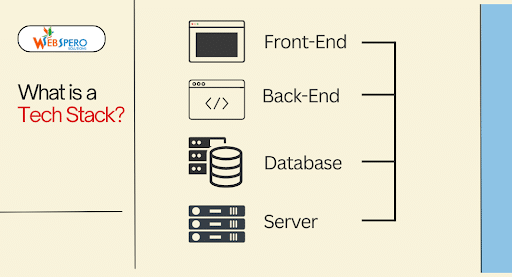
A tech or technology stack is a collection of tools, programming languages, and software used to develop a website or web application. This includes both frontend and backend components.
| NOTE: Sometimes, people confuse a tech stack with an application stack; however, both are very different. The latter is specifically a combination of software and tools designed to build, deploy, and run applications. |
What is a Full Stack?
While researching the right framework, you must’ve come across a specific phrase: Full-Stack vs. MERN vs. MEAN.
It is easy to get confused in this comparison; however, MERN and MEAN are subsets of full-stack development.
So, what is Full-stack development? It is the combination of tools and languages used to develop and deploy both the front-end and the back-end of an application or website. As mentioned, full-stack development comprises two major components:
Front-end
This aspect of development deals with building user interface elements (customer-facing services) like style, graphics, text, alignment, navigation, and more of a website or an application with the primary goals of responsiveness and performance.
Front-end development also deals with debugging and adds to the overall design and aesthetic of a website.
Additionally, a front-end developer will have to think about where their end user will be using the application, i.e., on iOS or Android, desktop, or more.
Back-end
Similar to how you don’t see your food being prepared at a restaurant, back-end development is done behind the scenes. It deals with writing code that enables database and application communication, writing APIs, creating libraries, and server-side web application logic.
| NOTE: If you’re working on a large-scale project like an LLM, you’d need to add multiple database(s) to your back-end to ensure modification capabilities and speed. |
What is MEAN Stack?
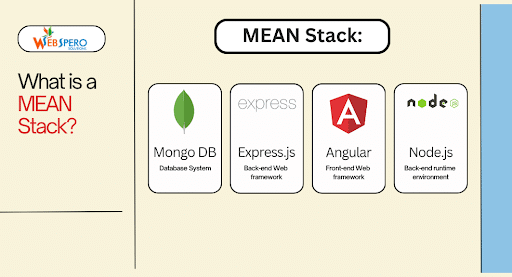
It is a JavaScript-based technology stack used to develop interactive and complex websites and web applications. MEAN is used across multiple industries from eCommerce to social media apps, some of the most popular companies that use it are Accenture.
Components of MEAN Stack
The MEAN tech stack consists of:
- MongoDB: It is a NoSQL database that stores application data in flexible and easy-to-access JSON documents.
- Express.js: A back-end framework that runs on Node.js and handles the app’s routing and server logic.
- Angular app: A front-end JavaScript framework used to build interactive user interfaces. It was created by Google.
- Node.js: Allows you to run JavaScript code on a server. It is a runtime environment.
| Tech Fact: The acronym MEAN was coined by Valeri Karpov in 2013. |
While the acronym MEAN gives a general understanding of the tech stack, it does not provide the complete picture, i.e., they don’t accurately describe all the components you need like APIs, Front-end, and Back-end.
Responsibilities of a MEAN Stack Developer
A full-stack MEAN developer is primarily responsible for developing responsive and dynamic websites and web applications using open-source technologies. Some additional responsibilities of a MEAN developer include:
- Ensure the web app functions properly by running tests
- Deploying web applications (making them live and accessible to users)
- Build reusable code blocks for the application
- Designing a database to structure how the app stores and retrieves data
- Integrating APIs (connecting the app with external services or tools)
How does the MEAN Stack Work?
To understand how it works, let’s take the example of the user trying to reach your business website.
- A user’s first point of contact will be with the Angular app, which is the presentation layer or UI of the website. This is what a user sees.
- Once the user clicks on any section of the website, Angular app will send a request (GET, PUT, or POST) to the Node.js server.
- Node.js then parses the incoming request using the Express.js framework to understand what action is requested.
- Express.js defines the routing and middleware to handle different types of requests, determining how each request should be processed.
Interaction with MongoDB (Database)
If the user is requesting something that requires the framework to interact with the database, this is how it is carried out:
- The server-side code (Node.js/Express.js) interacts with MongoDB to perform the necessary database operations.
- This could involve querying the database to retrieve data, inserting new records, updating existing ones, or deleting data.
Angular app → Node.js → Express.js → MongoDB
Pros and Cons of MEAN Stack
As with any technology, the MEAN stack comes with its own set of benefits and disadvantages.
Pros of MEAN Stack
Open Source
Each layer of the MEAN stack, i.e., MongoDB, Express.js, Angular app, and Node.js, is free and open-source. This gives developers the freedom to use publicly accessible libraries and repositories. Additionally, being open source ensures that it receives regular updates and provides a large community of developers.
Cloud Compatibility
Another huge advantage of being written in one language is that it allows for seamless cloud service integration, making it ideal for developing applications in a cloud environment.
Component-based Approach
Thanks to the component-based structure, developers can create reusable, modular code blocks. This simplifies maintenance and speeds up the development process.
Adaptability
Having a single programming language and MongoDB makes MEAN very flexible. Developers can add features mid-development and host the project to the cloud with MongoDB.
Fast Execution
Node.js’s non-blocking, asynchronous architecture can handle multiple client requests at one time and provides fast execution, improving the overall performance of web applications.
Isomorphic Coding
It offers codebase sharing and code reusability, meaning that developers don’t need to write separate code for client-side (browser) and server-side (Node.js). They can execute one code for both sides individually.
Budget-Friendly
Since the MEAN stack is based on open-source JavaScript, the development cost is significantly lower. Additionally, there are no upfront licensing fees, and isomorphic coding further lowers the development costs.
Scalable Testing
Comparatively, MEAN stack applications are easier to test, especially for cloud-based applications.
Cons of MEAN Stack
Documentation Challenges
With constant updates, one of the most common challenges with the MEAN stack is documentation. It can be lacking and can pose documentation difficulties, especially for new developers.
Browser Compatibility
A website or web application created with it may not work properly on older web browsers.
Security Concerns
Data security is a big concern, as the MongoDB database is known for its recent security vulnerabilities.
Learning Curve
You require highly skilled developers who are proficient in all four components of the MEAN stack. Additionally, if a developer comes from a non-JavaScript background, it can be challenging for them to understand it quickly.
What is MERN Stack?
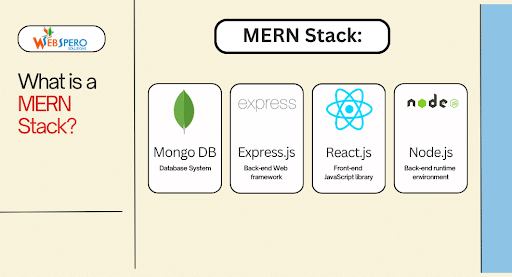
It can be considered as the modified version of the MEAN stack, as they both share three major components. The only difference is that the frontend framework Angular app is substituted for React.js, and it allows you to create Single Page Applications (SPA).
| SPA: Here, the server only renders a shell, and then JavaScript handles the rendering on the client side, making the website feel like a native component of the user interface. For instance, instead of loading another page upon clicking a section, it will open a small window within the same page. |
Components of MERN Stack
It consists of:
- MongoDB: NoSQL database
- Express.js: A back-end framework
- React.js: A front-end JavaScript library used to build interactive user interfaces.
- Node.js: Allows you to run JavaScript code on a server.
Responsibilities of a MERN Stack Developer
A MERN developer is also responsible for developing responsive and dynamic websites and web applications.
- Developing front-end interfaces with React for a seamless user experience.
- Writing server-side logic using Node.js and Express.js for efficient back-end functionality.
- Designing and managing databases using MongoDB to store data.
- Integrating APIs.
- Ensuring cross-platform compatibility and mobile responsiveness.
How does the MERN Stack Work?
It works similarly to the MEAN stack; however, the user will interact with React instead of the Angular app as the front end.
- Users interact with React.js, which is the presentation layer or UI of the website. This is what a user sees.
- Upon clicking a section of a website, React will send a request (GET, PUT, or POST) to the Node.js server.
- Node.js will then parse the request using Express.js, which manages routing and APIs, to understand the intent of the request.
- Depending on the request, appropriate action will be taken.
| NOTE: Interaction with MongoDB (Database) works exactly like in the MEAN stack. |
So, the flow of the MERN stack is:
React.js → Node.js → Express.js → MongoDB
Pros and Cons of MERN Stack
The MERN stack also comes with its own set of benefits and disadvantages.
Pros of MERN Stack
Open Source: All of its components are open source as well, meaning developers can access public libraries and receive regular updates.
Popular Frontend Libraries: Thanks to React, the MERN stack development can leverage vast front-end libraries.
Dynamic Schema: The structure of the data can change dynamically, which is useful for evolving web applications. Additionally, it provides powerful tools, both GUI and command-line, making development flexible and faster.
Client-side Navigation: Instead of the browser sending a request to the server for a new page, React Router maps different URL paths to specific components, allowing seamless transitions between views.
Single Page Application (SPA): While both MEAN and MERN stacks can help you develop SPAs, the latter is more efficient because React is a library that tends to be faster in terms of performance.
Only Requires JavaScript: All the components of the MERN stack require only JavaScript, meaning developers can use the language throughout the development process.
Real-time Applications: The MERN stack is also well-suited for building real-time applications as it can handle asynchronous communication efficiently. This allows developers to create real-time features like chat apps, live notifications, and more.
Cons of MERN Stack
Documentation Challenges: With its components constantly getting updates to add new features or fix issues, documentation becomes challenging, and it slows down the entire development process.
Scalability: Despite having Node.js as the runtime environment, the MERN stack faces challenges when it comes to handling very high loads or heavy computations, as it is more suited for SPAs.
Learning Curve: Similar to the MEAN stack, you require highly skilled developers who are proficient in all four components.
SEO Challenges: Search engines often struggle to crawl and index SPAs properly since they expect traditional HTML-based websites. As a result, important keywords and metadata might not be indexed, leading to poor search engine rankings.
Key Differences Between MEAN and MERN Stack
Here’s a quick comparison between the MEAN and MERN stacks:
| Tech Stack | MEAN | MERN |
| Category | JavaScript Framework | Open-source JS Library |
| Language | TypeScript | JavaScript, JSX |
| Frontend Framework/Library | Angular App | React.js |
| App Architecture | Component-based | Component-based |
| Data Binding | One-way & Two-way | One-way |
| DOM | DOM Regular | DOM Virtual |
| Mobile Applications | Supports (with Ionic) | Supports |
| Scalability | Ideal for Enterprise-level apps | Ideal for Real-time Modular apps |
| Third-party Support | Offers features that support different requests | Requires additional libraries for the same requests (costing more) |
While it seems there are little differences between these two frameworks, ultimately, it comes down to the front end. This is what Amit Rawat, our Technical Manager with 10+ years of experience in the field has to say on this:
“Choosing between the MEAN and MERN stacks, the backend remains the same, i.e., M(Mongo), E(Express), and N(Node). The only decision to be taken is for the front end between A(Angular) and R(React), understanding the project and its requirements will always help in making the right choice. React is good where you need more flexibility and freedom to choose how to manage the application’s state and lifecycle, while Angular is good for large-scale applications where maintaining consistency across the team is vital.”
Popularity of the MEAN Stack vs MERN Stack
The main popularity driving factor of these tech stacks is the frontend. MEAN utilizes Angular, whereas MERN operates on REACT. Therefore, the popularity of these stacks are directly determined by the popularity of the frontend.

It is clear that the popularity of React is, on average, 50% higher than that of Angular in the United States.
Additionally, StackOverFlow’s 2024 survey clearly shows the popularity advantage of 22% of React over Angular.
Why Frontend Popularity Matters?
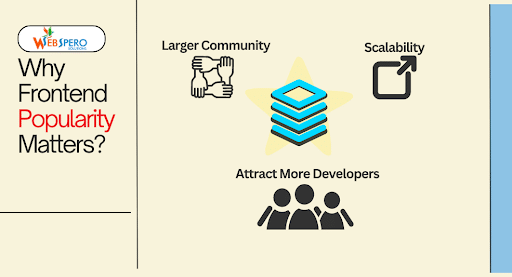
There are three major reasons why to consider the popularity of the frontend when it comes to choosing a tech stack.
Larger Community
React being more popular means it has larger community support and receives frequent updates, making it easier to work with and troubleshoot issues.
Scalability
Popularity directly translates to long-term scalability and feature development.
Attract More Developers
A larger community and popularity tend to attract more developers with varying skills, allowing you to choose the right developers for your business.
How to Choose the Right Stack for Your Business
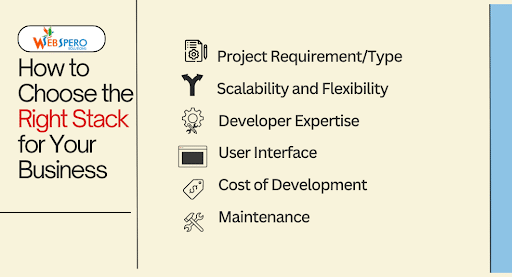
Is popularity the right metric to choose a tech stack? It is one of them; however, the following factors will allow you to answer which stack you should choose for your next project:
Project Requirement/Type
First, you’ve to define your goal and understand its scope. Are you looking to build an enterprise-level app or are you looking to build a quick and responsive web app?
Depending on your requirements, you can pick a stack.
Here’s a quick reference guide:
When to Choose MEAN Stack?
To develop large-scale enterprise-level applications with complex features using Angular’s structured framework. For instance, developing an eCommerce website.
When to Choose MERN Stack?
To build highly interactive, fast, and reactive web applications, utilizing React’s quick development and virtual DOM. For instance, social media websites.
Scalability and Flexibility
While both stacks are scalable, MERN provides more flexibility. However, do keep in mind that MEAN is better for a more structured development.
Developer Expertise
It is a good idea to assess your development team’s skills and comfort level with technologies. If your team is comfortable with React, it is better to go for the MERN stack. However, you can always opt for professional full-stack development services.
User Interface
If the user interface is one of the primary objectives of your web application, it is best to opt for the MERN stack. This is because the system creates a visual frame or a snapshot of the necessary parts of the webpage that appear on the screen, ensuring a smooth interaction with the user. On the other hand, MEAN stack uses a structured framework that manages both data binding and updating the view, providing a consistent experience but which can be slower to load.
Cost of Development
Now, both MEAN and MERN stacks are open-source, meaning you do not have to allocate a huge amount of budget to the tech stack itself. With that said, you do need to consider the cost of talent (developers), server hosting fees, and other licensing fees associated with specific tools or libraries.
Maintenance
Typically, the MERN stack is easier to modify, making it ideal for MVPs and SPAs. On the other hand, making modifications to a MEAN-based website is complex, but it is structured.
AI and Your Full Stack Projects
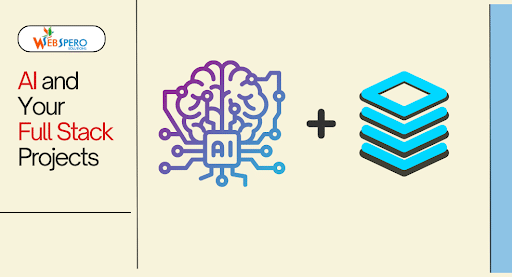
Currently, AI is all the hype, and the way industries are spending billions of dollars on AI, this trend is only going to rise.
Still, if you are asking, “Why should I integrate AI with my MEAN/MERN development?” Here are all the reasons why:
- Enhance user engagement
- Analyze large sets of data (user behavior and activities)
- Suggest custom solutions based on data
- Handle user queries
- Provide tailored content to users
For instance, AI can be used to provide customized product recommendations on eCommerce websites, or it can detect trends and organize content on social media.
How to Integrate AI in Your Full-Stack Project?
When it comes to integrating AI in your project, know that the process for MEAN and MERN stack is very similar, except for the frontend.
Identify Your Needs and Specific AI/ML Model
Define your company’s goal and identify exactly what AI/ML model you require. Some of the common use cases are:
- Image Recognition
- Natural Language Processing (NLP)
- Predictive Analytics
- Recommendation Systems
- Chatbot
Choose an AI Framework or Set up APIs
If you are willing to create a custom model, you should opt for TensorFlow.js as the framework. This can work seamlessly with both the MEAN and MERN stacks.
However, if you are going for cloud-based AI/ML services, you can try Google Cloud AI Platform, AWS SageMaker, or Microsoft Azure Cognitive Services.
Integrate with the Backend
Since both stacks have the same backend, Node.js will handle model processing, send requests to AI models, and retrieve data.
Frontend Integration
This is the only difference you will encounter in the integration process because of Angular and React.
For Angular:
After using libraries (TensorFlow.js or APIs), Angular’s HTTP client can be used to get predictions or data from AI models.
Finally, bind the AI model outputs to Angular components via two-way data binding.
For React:
Similar to Angular, you can install AI libraries or use external APIs. Then, AI data can be managed with React’s useState and useEffect hooks, or Redux can be used for more advanced state management. Finally, the AI results will be rendered using JSX and React components.
Challenges of AI Integration in Full-Stack Development
Although AI provides tremendous benefits and boosts development efficiency, there are certain limitations that pose a challenge when it comes to integrating AI into development processes.
- Data privacy concerns
- Requiring high-quality training data
- Huge initial cost
- Limited creativity
Future of Full Stack and AI Integration
Undoubtedly, in the distant future, AI will significantly impact how web development works. Websites and web applications will be able to provide a more dynamic and personalized user experience. Here are some ways AI will benefit development in the future:
- Automating debugging and testing
- Allowing businesses to leverage ML without deep expertise
- Integrating AI into front-end development (React/Angular) can provide personalized user experiences
- Real-time threat detection and predictions for cybersecurity
So, Which Full Stack Framework is Right For Your Business?
By now, you know that the MERN stack is more popular, and you have more options to pick the right React developer for your business.Here’s what Varinder Singh, a full-stack developer with a decade of experience, has to say on this:
“In my experience with both the MEAN and MERN stacks, I find MERN to be the better option. React offers superior community support, making it easier to find developers. Its shallow learning curve allows anyone familiar with JavaScript to jump in quickly. Plus, being unopinionated, React provides the flexibility needed for efficient scaling.”
But does that mean the MERN stack is the way to go? Not quite. This is because you must consider the factors mentioned above to choose the right tech stack for your development project.
If you are unsure of where to get the right skill set, you can opt for our professional MEAN stack development and MERN stack development services.
Frequently Asked Questions (FAQs)
Which is more expensive, MEAN or MERN?
Both frameworks are open-source, meaning they both are relatively budget-friendly. However, the cost of the entire development process will depend on factors like the scope of the project, complexity, cost of developers, and more.
Is there a difference between MERN and MEAN?
Yes, MEAN uses Angular as the frontend framework, while MERN uses React as the frontend JavaScript library to build user interfaces. Additionally, MERN is more popular than MEAN in 2024.
Why React is better and more popular than Angular?
React offers better performance, efficiency, and backward compatibility, allowing developers to reuse components. Also, React is easier to use than Angular, making the MERN stack more popular and in demand.
Which one to choose when considering TypeScript vs JavaScript?
The primary difference between these two is that TypeScript is a superset of JavaScript.
JavaScript is a lightweight language that is used to build dynamic web pages. It is also flexible and doesn’t require strict data types.
TypeScript is an OOP language based on JavaScript, and it adds static typing, meaning it can help you define variable types, making code more predictable.
In essence, TypeScript provides structure and clarity, while JavaScript is more flexible but less structured.
Which takes longer to develop with MEAN vs MERN?
While it depends on the scale of the project, with Angular’s structured approach, MEAN often takes longer to develop.
